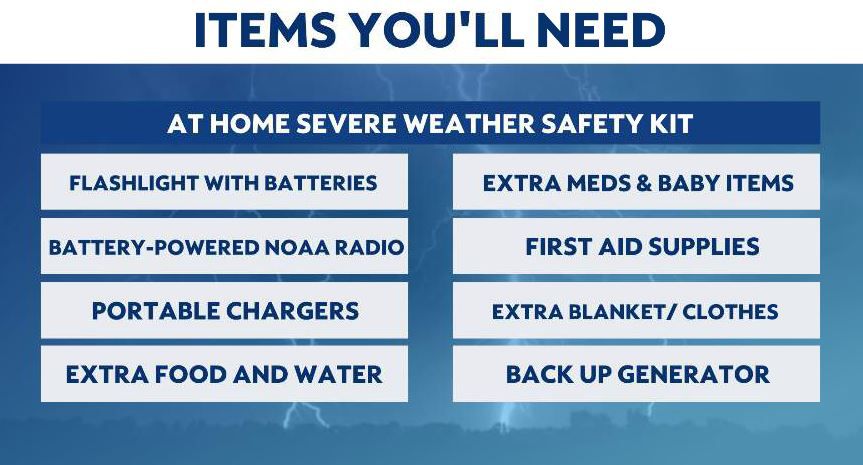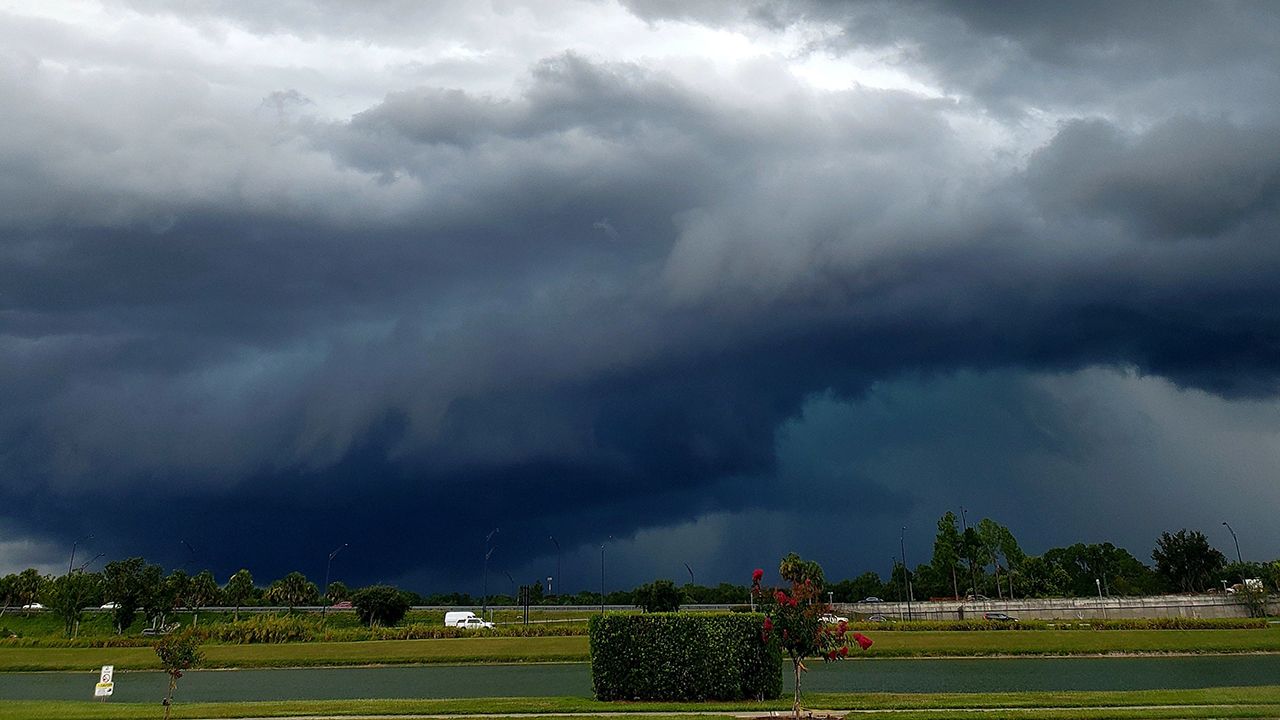*The statewide tornado drill is canceled for Wednesday, March 22, 2023.*
In Ohio, our most active severe weather months are typically May through July. However, Mother Nature doesn't follow a calendar, and severe storms can occur during any month throughout the year.
This severe weather season has started fast, with the first four tornadoes forming in late February. And another four tornadoes struck the state just a week later in early March.
It is essential to prepare for dangerous and destructive storms now, so that you'll be prepared as we move into the heart of severe weather season.

Let's break down three key tips you and your family can do this week to prepare for the upcoming season.
First on our severe weather checklist is your severe weather emergency kit. This is essential.
Either dust off your safety kit or create one.
You'll find a list below to reference important items for your severe weather emergency kit.

If you have a kit from previous seasons, that's great! But don't forget to update things or make sure nothing has expired within the kit like food, batteries, etc.
Our next tip is knowledge. It's vital for you and everyone in your household to understand basic severe weather terms such as watch and warning.
Plus, know what to do when you hear a meteorologist inform you there is one out for your area.
So it's time to refresh the difference and discuss your severe weather preparedness plan for each.
During a watch, you will want to be ready. With a Severe Thunderstorm Watch or Tornado Watch, it's important to stay up to date with the developing forecast.
The National Weather Service (NWS) typically, not always, issues one BEFORE a warning so people can prepare with as much time as possible ahead of severe storms or a tornado.
If they issue a watch, do you know where your severe weather emergency kit is? Where would your household go in case of severe weather? What is your plan? These are a few questions to discuss with your family beforehand.
A warning means to take action. If the NWS issues a warning for your area, it means take shelter and go to your safe spot.
Sometimes they can issue a warning quickly and there isn't much time to react, so that's why planning will help keep you and your household as safe as possible, so when/if the time comes, you can react.
Finally, practice. Practice makes perfect, or in this case, can help keep you and your family safe.
A common question is, "where do we want to go in case a severe storm or tornado occurs?"

The safest spot will be a basement or a storm shelter if you have one. If those aren't an option, no worries. The next best place is a closet, bathroom (with no windows) or an interior hallway.
Areas in your house that are away from windows and in an interior room will work.
If you are driving, you'll want to leave your vehicle immediately to seek safety in an adequate structure. It's never smart to outrun a tornado in your car, and do not stop under an overpass or bridge.
Communicating and practicing this week will help keep you and your family safe. Think of it this way: It's weather prepared, not weather scared.
Also, stay up to date with the latest forecast and severe weather information with your NOAA Weather Radio and your Weather on the 1s weather team.
You can find the Weather on the 1s forecast on TV, through the Spectrum News 1 app and website!
Our team of meteorologists dives deep into the science of weather and breaks down timely weather data and information. To view more weather and climate stories, check out our weather blogs section.



